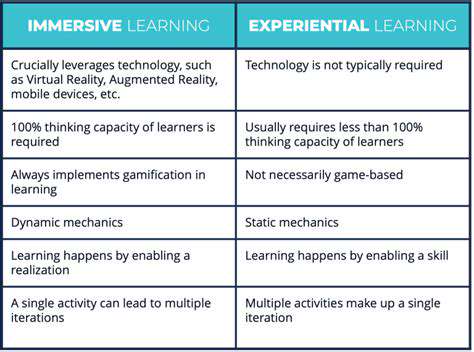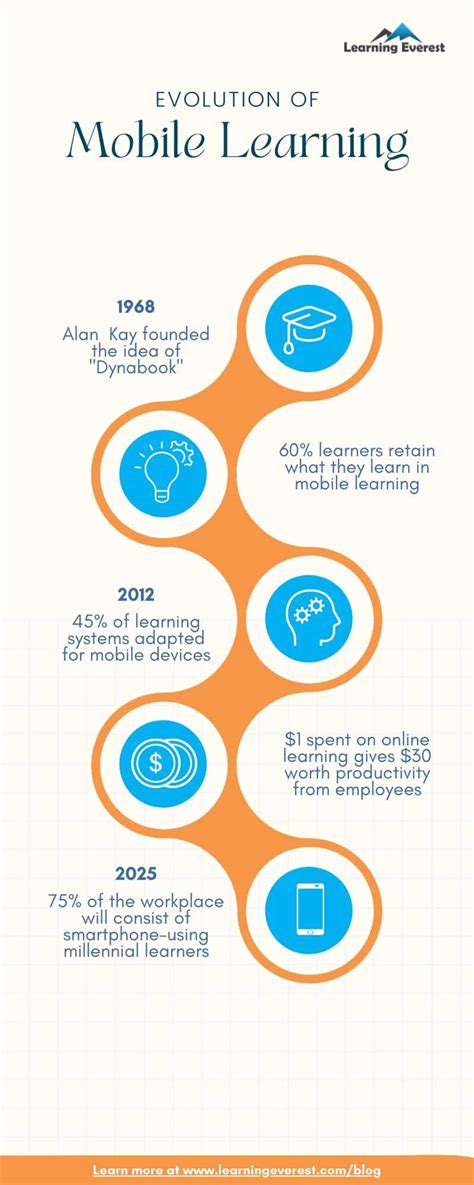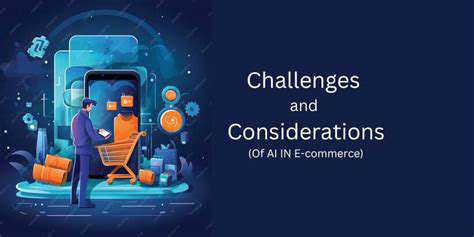The Impact of Mobile Learning on Global Digital Inclusion
Outline
Mobile learning expands education access globally through portable devices.
Growth driven by smartphone adoption and internet connectivity improvements.
Mobile platforms enable flexible, on-the-go learning for diverse populations.
Educational content delivery has shifted toward mobile-friendly formats.
Mobile learning promotes inclusive education, bridging geographical and socioeconomic gaps.
The Rise of Mobile Learning and Its Role in Expanding Educational Access
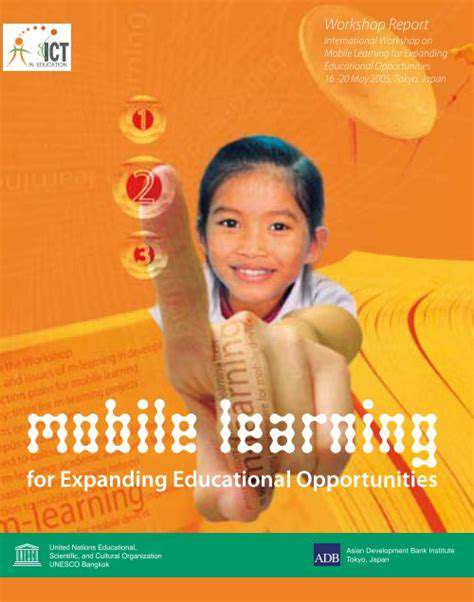
Understanding the Growth of Mobile Learning
In recent years, mobile learning has surged in popularity, fundamentally altering how people engage with educational materials. The widespread availability of smartphones and tablets has empowered learners to study whenever and wherever they choose, effectively dismantling long-standing obstacles to education. This transformation stems from breakthroughs in mobile technology, broader internet access, and a growing preference for adaptable learning solutions. Notably, mobile learning has democratized education, reaching diverse populations worldwide.
The flexibility of mobile learning platforms allows users to interact with courses, videos, and interactive modules at their preferred pace. Recognizing the potential of these tools, educational institutions and organizations are leveraging them to boost learning outcomes and engagement. As mobile devices continue to advance, the capabilities of mobile learning will evolve, offering more immersive and tailored experiences.
The Impact on Traditional Education
Mobile learning is reshaping conventional classroom dynamics by complementing or even replacing in-person instruction with digital content. Schools and universities are increasingly adopting mobile apps and platforms to deliver hybrid learning models that blend online and offline experiences. This approach grants students unparalleled flexibility in managing their schedules and learning environments.
However, this shift also highlights concerns about digital equity and the digital divide. Not all students have equal access to reliable mobile devices or internet connections, which can deepen existing educational inequalities. Policymakers must prioritize addressing these disparities to ensure mobile learning benefits all students equitably.
Technological Innovations Driving Mobile Learning
Cutting-edge technologies like augmented reality (AR), virtual reality (VR), and artificial intelligence (AI) are revolutionizing mobile learning experiences. These tools facilitate immersive simulations and personalized feedback, making learning more engaging and effective. For instance, AR applications can overlay digital information onto real-world objects, enhancing comprehension of complex subjects.
Additionally, AI-powered dashboards and analytics enable educators to monitor student progress more closely, allowing for customized instructional strategies. The integration of these advanced technologies heralds a new era where mobile learning is not only convenient but also highly interactive and personalized.
The Challenges of Mobile Learning Adoption
Despite its advantages, mobile learning faces several hurdles that impede widespread adoption. A primary concern is ensuring the security and privacy of user data, particularly when handling sensitive educational information. Challenges related to device compatibility and software interoperability across different platforms also persist.
Another significant challenge is maintaining learner motivation and discipline in a digital environment. Without the physical presence of teachers and peers, some students may struggle with self-regulation and engagement. Overcoming these obstacles requires robust platform design, effective digital literacy programs, and continuous support for both learners and educators.
The Future of Mobile Learning in Education and Training
The future of mobile learning is poised for continued growth, fueled by technological advancements and evolving educational paradigms. Emerging trends include more sophisticated AI tutors, gamified learning experiences, and increased use of data analytics to personalize learning paths. These innovations aim to make education more engaging, effective, and accessible for all learners.
Moreover, mobile learning will play a pivotal role in lifelong learning and professional development, enabling workers to upskill and reskill in a rapidly changing job market. As mobile devices become more powerful and affordable, they will serve as indispensable tools in shaping the future of education worldwide.
The Impact of Mobile Learning on Reducing Educational Disparities
Expanding Access to Quality Educational Resources in Underserved Communities
Mobile learning has revolutionized access to educational content for students in remote or economically disadvantaged areas. With smartphones and tablets becoming increasingly affordable, learners no longer depend solely on traditional brick-and-mortar schools or limited local resources. This technology connects students to a wealth of online textbooks, interactive lessons, and expert-led tutorials, bridging gaps caused by geographical and economic barriers. Consequently, students in underserved communities can now access high-quality education previously beyond their reach, fostering greater equity in learning opportunities across regions.
Personalized Learning and Its Role in Addressing Individual Needs
One of the most significant benefits of mobile learning is its ability to deliver personalized educational experiences tailored to individual student needs. Adaptive learning applications assess a learner’s strengths and weaknesses, offering customized content that enhances understanding and retention. This approach is particularly beneficial for students who struggle in traditional classrooms or have learning disabilities, as it allows them to progress at their own pace. By accommodating diverse learning styles and needs, mobile learning helps reduce disparities in educational achievement, ensuring every learner has the opportunity to succeed.
Challenges and Opportunities in Implementing Mobile Learning for Digital Inclusion
Technological Accessibility and Infrastructure Development
One of the primary challenges in implementing mobile learning for digital inclusion is ensuring diverse populations have access to reliable and affordable internet connectivity. Many underserved communities lack essential infrastructure, such as high-speed broadband and sufficient mobile network coverage, which hampers effective learning experiences. Addressing these disparities requires significant investment from governments and private sector partners to expand network infrastructure into rural and marginalized areas.
Furthermore, device accessibility remains a concern, as not everyone can afford smartphones or tablets capable of supporting advanced educational applications. Initiatives that provide subsidized or shared devices can help bridge this gap, but sustainability and maintenance of such programs are ongoing challenges. Without adequate infrastructure and accessible devices, mobile learning cannot reach its full potential for promoting digital inclusion and equitable education opportunities.
Designing Inclusive and Culturally Relevant Content
Creating educational content that resonates with diverse learners is essential for successful mobile learning implementations. Content must be culturally sensitive, localized, and available in multiple languages to engage learners from different backgrounds. This requires collaboration with local educators and communities to develop materials that are relevant, respectful, and effective in conveying knowledge.
In addition to cultural relevance, content design must consider varying literacy levels and technological proficiency. Interactive and multimedia elements can enhance engagement, but they should be adaptable to low-bandwidth environments and accessible to users with disabilities. Inclusive content development ensures that mobile learning tools serve all learners equally, fostering greater digital inclusion.
User Engagement and Motivation Strategies
Maintaining learner motivation in mobile learning environments presents unique challenges, especially when learners face distractions or lack immediate social support. Implementing gamification techniques, such as badges, leaderboards, and rewards, can significantly increase engagement levels by making learning more enjoyable and competitive.
Moreover, incorporating social features like discussion forums, peer assessments, and collaborative projects encourages community building and peer support. Personalized learning pathways, where content adapts to individual progress and interests, help sustain motivation by providing learners with a sense of achievement and relevance in their educational journey.
Privacy, Security, and Data Protection Concerns
As mobile learning relies heavily on digital platforms and data collection, safeguarding learners' privacy and security becomes paramount. Sensitive personal information, including location data and learning progress, must be protected against breaches and misuse. Establishing clear data policies and employing encryption technologies are critical steps in building trust among users.
Additionally, there is a need to educate learners about digital safety practices to prevent exploitation, cyberbullying, and other online risks. Ensuring secure access, regular updates, and transparent data handling procedures are vital for fostering a safe environment where learners can focus on their educational pursuits without fear of privacy violations.
Policy and Regulatory Frameworks for Sustainable Implementation
Effective policies are essential for guiding the sustainable integration of mobile learning into national education systems. Governments must develop regulations that promote equitable access, foster innovation, and support the development of open educational resources. Clear standards and guidelines help ensure consistency and quality across various mobile learning initiatives.
Furthermore, policies should address issues related to funding, infrastructure development, and teacher training, creating a comprehensive ecosystem that supports ongoing digital inclusion efforts. Collaborative efforts among policymakers, educators, technology providers, and communities are necessary to overcome barriers and leverage opportunities presented by mobile learning technologies.
Evaluating Impact and Scaling Successful Models
Measuring the effectiveness of mobile learning initiatives is crucial for understanding their impact on digital inclusion and educational outcomes. Implementing robust evaluation frameworks enables stakeholders to identify strengths, weaknesses, and areas for improvement. Data-driven insights can inform future program adjustments and resource allocations.
Scaling successful models requires careful planning, including adapting content and delivery methods to different contexts and ensuring infrastructure readiness. Building partnerships with local organizations and leveraging community resources can facilitate wider dissemination of effective mobile learning practices, ultimately contributing to broader digital inclusion goals.
The Future of Mobile Learning in Promoting Global Digital Equity
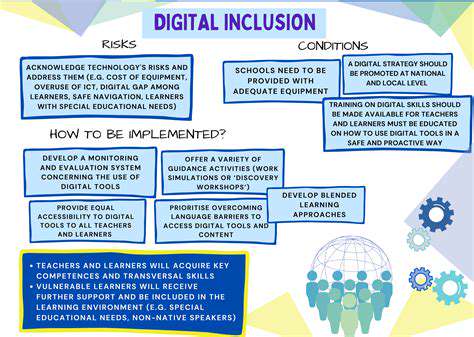
Advancements in Technology and Their Impact on Mobile Learning
Rapid developments in mobile device hardware, such as faster processors and improved battery life, are significantly enhancing the mobile learning experience. These advancements allow students to access high-quality educational content seamlessly, regardless of their location. Furthermore, emerging technologies like augmented reality (AR) and virtual reality (VR) are Transforming the Way learners interact with educational material, making learning more immersive and engaging.
Artificial intelligence (AI) and machine learning are increasingly integrated into mobile learning platforms, enabling personalized learning paths tailored to individual student needs. This customization ensures that learners receive targeted support, improving retention rates and overall educational outcomes. As these technologies become more affordable and widespread, we can expect mobile learning to become even more adaptive and responsive to diverse learner profiles.
Integration of Artificial Intelligence and Personalization
AI-driven algorithms analyze learner behavior and preferences to recommend tailored content, assessments, and feedback. This personalization helps learners stay motivated and engaged, leading to better academic performance. Educators can also leverage AI insights to identify areas where students struggle and intervene proactively.
Moreover, AI chatbots are increasingly used within mobile learning platforms to provide instant support and answer queries 24/7. This immediate assistance enhances the learning experience and fosters a more interactive environment. As AI continues to evolve, the potential for truly personalized and adaptive mobile learning experiences will expand exponentially.
Innovations in Content Delivery and Engagement
The future of mobile learning will see a shift towards more interactive and multimedia-rich content, including videos, podcasts, and gamified modules. These formats cater to different learning styles and make complex topics more accessible. Gamification elements, such as badges and leaderboards, motivate learners to complete courses and participate actively.
Additionally, microlearning—delivering content in small, manageable units—will become more prevalent, allowing learners to acquire knowledge quickly and efficiently. Mobile platforms will continue to evolve to support these innovative content delivery methods, making learning more flexible and user-centric.
The Role of Social and Collaborative Learning in Mobile Education
Social features integrated into mobile learning apps enable learners to connect, share ideas, and collaborate on projects across geographical boundaries. These interactions foster a sense of community and improve knowledge retention through peer-to-peer learning. Real-time discussions, group chats, and collaborative assignments are becoming standard features on modern platforms.
As mobile learning environments become more social, educators can facilitate more engaging and participatory experiences. This collaborative approach prepares learners for real-world teamwork and communication challenges, making mobile learning more holistic and effective.
Challenges and Opportunities in the Evolution of Mobile Learning
Despite the promising future, several challenges remain, such as ensuring equitable access to devices and high-speed internet for all learners. Addressing these disparities is crucial to avoid widening the educational gap. Privacy and data security are also significant concerns, especially as more personal data is collected to personalize learning experiences.
On the other hand, emerging technologies offer opportunities to overcome these obstacles by providing innovative solutions, like offline access and secure cloud-based platforms. The continued evolution of mobile learning will depend on collaboration among educators, technologists, and policymakers to create inclusive, secure, and effective educational environments.
Read more about The Impact of Mobile Learning on Global Digital Inclusion
Hot Recommendations
- The Gamified Parent Teacher Conference: Engaging Stakeholders
- Gamification in Education: Making Learning Irresistibly Fun
- The Future of School Libraries: AI for Personalized Recommendations
- EdTech and the Future of Creative Industries
- Empowering Student Choice: The Core of Personalized Learning
- Building Community in a Hybrid Learning Setting
- VR for Special Education: Tailored Immersive Experiences
- Measuring the True Value of EdTech: Beyond Adoption Rates
- Addressing Digital Divide in AI Educational Access
- Preparing the Workforce for AI Integration in Their Careers
